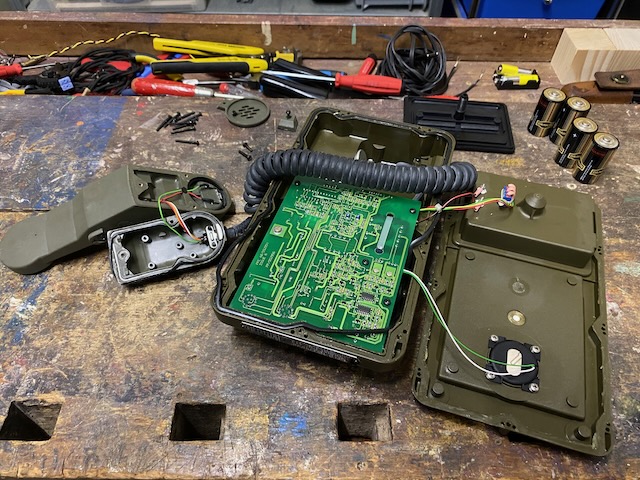
This field telephone is a Racal Acoustics product (Product name RA2000 [2]) developed in the early 90ties, based on the instructions release date it was introduced in the Britisch Army in 1994 as PTC 414 [1] (Or may it was introduced earlier). It is most probably the last British army analog field telephone. The product seems to be no longer in the Racal Acoustics product lineup, the handset RA250 still is though [3].
Product description from [1]:
The Combat field Telephone UK/PTC/414 is a 2-wire telephone set designed for connection into 2-wire magneto field telephone systems, or Central Battery (CB) signalling exchanges. The unit provides facilities for magneto ringing and 2-way duplex speech communication. Operation is from internal batteries in LB mode, and line powered in CB mode.
The phone can be used in the modes LB (Local battery), STBY (Standby) or CB (Central battery). In standby mode it will still be receiving incoming ringing. In central battery mode no local batteries are required. To speak in CB mode the P.T.T. button has still to be pressed. In the battery compartment there is a switch to choose pulse or DTMF dialling.
The phone supports a "whisper" mode (only combined with visual incoming call signalling) which amplifies the voice channel. The ringer can be set to visual only or low or high ring volume.
Disassembled.
To remove the circuit board the selector switches on top have to be removed, I did not find how and did not want to break it.

On hook.
Left selector (Mode): LB, STDBY, CB.
Right selector (Volume): Visual/Whisper, Visual, Lo, Hi.
The LED row above the selectors indicates VIS (visual alarm), Activity led (flashes every few seconds if telephone is in use) and Ring check (lights to confirm outgoing ringing).
Above the LEDs (behind the two binding posts) the ring button.
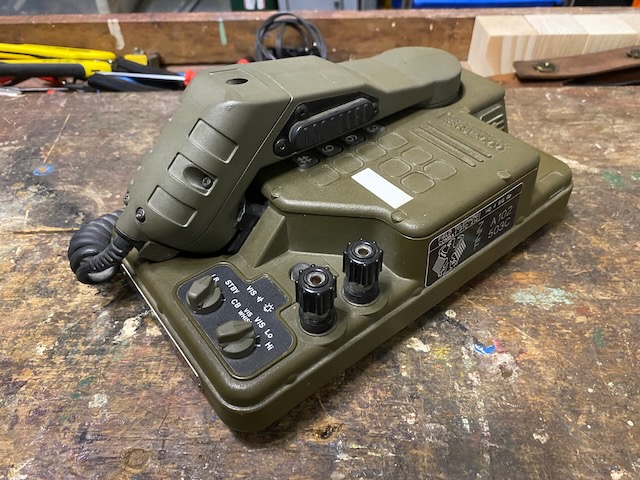
Off hook.
The handset clamp is in "fix" position (holds handset fix when put on hook), the big middle screw can be opened to move the clamp up, in the up position the handset is not hold fix when on hook.
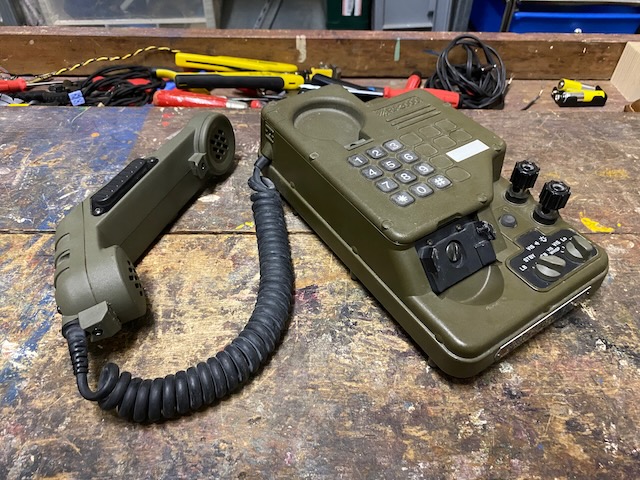
User guide on the back.
The slits can be used to fix the phone to a table or wall.
The small horizontal slit at the top of the guide can be used as wire stripper.

Handset TX side opened.
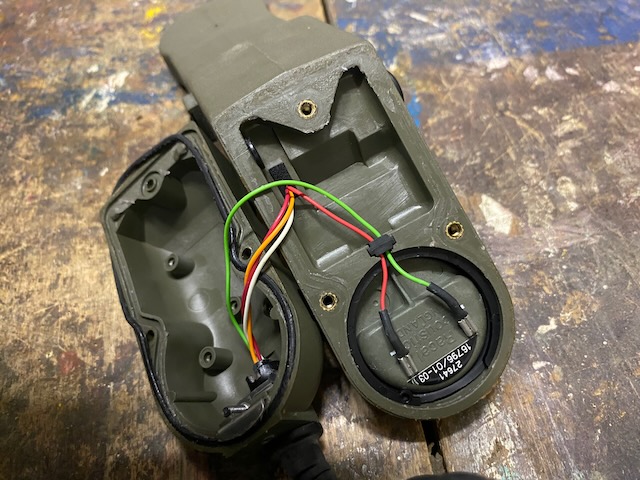
Handset RX side.
I did not try to remove the RX capsule (which seems to be glued in or has a very tight fit) to not damage it.

The circuit board bottom.

Mounted to the base: the battery connections, the Pulse/DTMF switch, the piezo ringer.

Below the main board the keypad board.
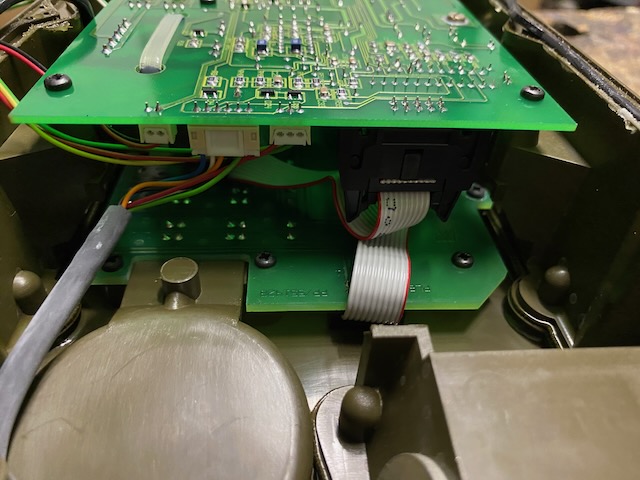
Inside the battery compartment the Pulse/DTMF switch (LD = loop disconnect = pulse; MF = DTMF).
I assume 1198 on the serial number label indicates the manufacturing date of Nov. 1998.

Bottom with closed battery door.
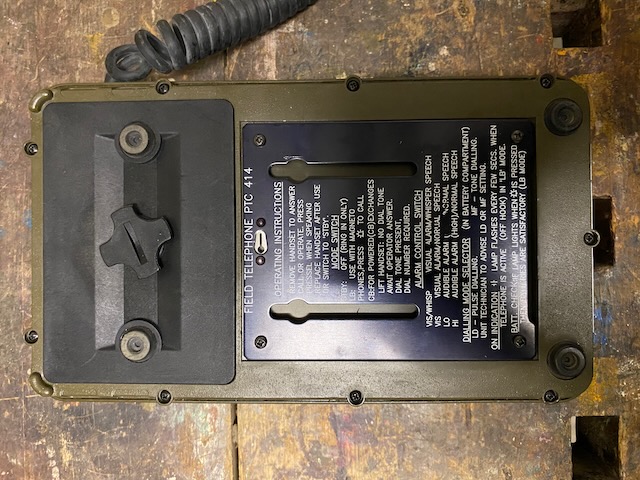
British army label, not sure how to read.
(Based on googling around and wikipedia there was a 4 SIG Gp but that one was deactivated in 1992 already, so this "4 SIG Gp" must be some other unit.)
Update (20230326): Thanks to Youtube user DK for pointing this out: The lower part of the label is a German ZZF approval. ZZF approvals of that format were assigned between 91 and 92 - this years would match again with "HQ 4 Sig Gp" being the above mentioned 4th Signal Group stationed in Germany, which may indicate that the device was introduced earlier than 1994.
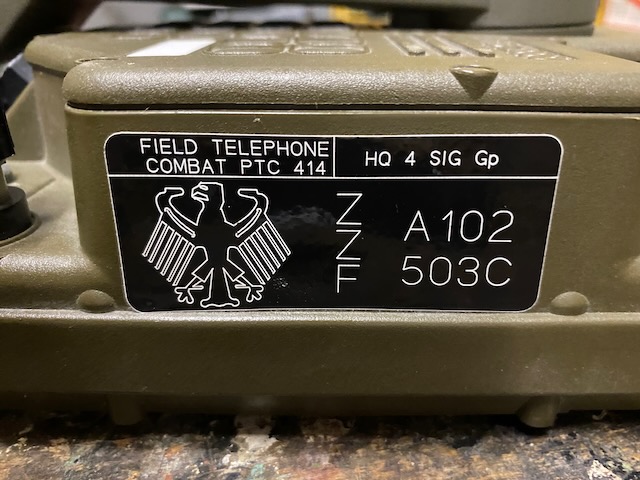
Type label.
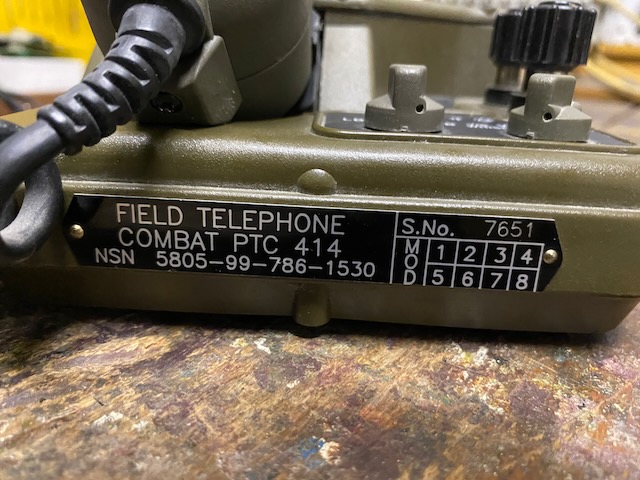
Top view, on hook.
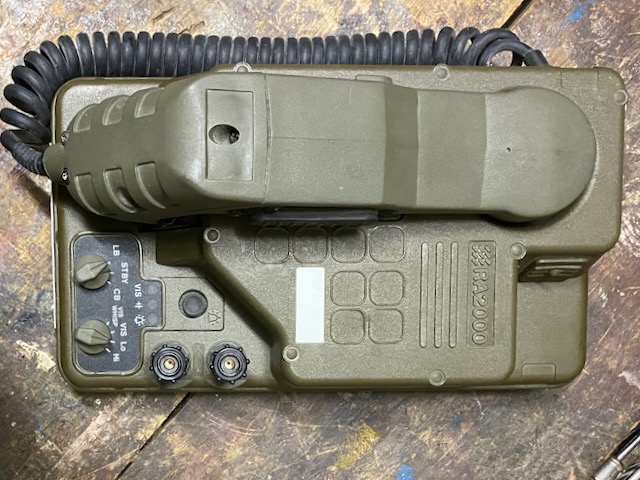
Top view, off hook.
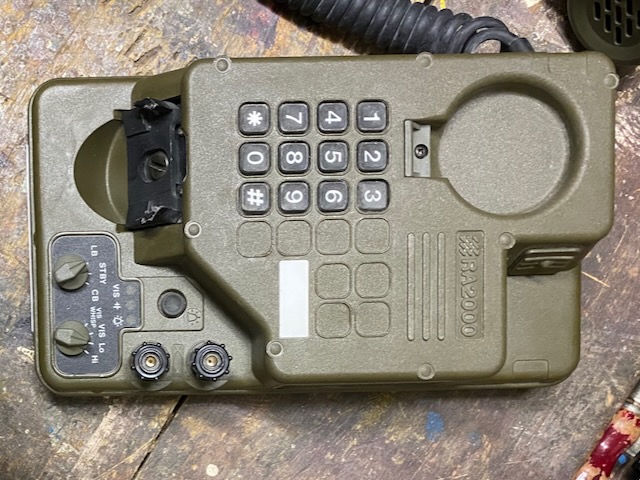
Creative Commons Attribution-ShareAlike 4.0 International License